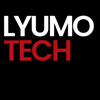In the dynamic landscape of modern business operations, efficiency and automation play pivotal roles in driving success. With tools like Power Automate, organisations can streamline their processes and enhance productivity. One key aspect of Power Automate is its ability to manage business process flows, offering two distinct types: Embedded and Immersive flows. Let's delve into what these are and how they differ, along with a real-time example to illustrate their applications.
Embedded Flow
Embedded flows are seamlessly integrated within the user interface of a Dynamics 365 application. They are designed to guide users through a series of predefined steps, ensuring consistent execution of business processes. Users interact with these flows directly within the context of their existing workspace, enhancing user experience and workflow continuity.
Example: Suppose a sales representative is working within the Dynamics 365 Sales application to onboard a new client. An embedded flow can be utilised to automate the process of gathering client information, assigning tasks to relevant team members, and updating the CRM database—all without leaving the familiar interface of Dynamics 365.
Immersive Flow
On the other hand, immersive flows provide a more comprehensive automation experience by allowing users to engage with them through dedicated interfaces outside of Dynamics 365 applications. They offer greater flexibility and customisation options, enabling organisations to implement complex workflows and integrations across multiple systems.
Example: Consider a scenario where an organisation needs to automate the approval process for purchase orders. An immersive flow can be created using Power Automate, which triggers when a new purchase order is created in Dynamics 365 Finance. This flow can then route the purchase order through various approval stages, notify approvers via email or Microsoft Teams, and update the status in the ERP system—all while providing a centralised dashboard for monitoring and managing the entire process.
When to Use Each Type
The choice between embedded and immersive flows depends on factors such as the complexity of the process, user preferences, and integration requirements. Here's a general guideline:
Use Embedded Flows: For straightforward, repetitive processes that need to be executed within the context of Dynamics 365 applications, embedded flows offer a seamless user experience and simplified implementation.
Use Immersive Flows: When dealing with complex workflows that span multiple systems or require extensive customisation and integration capabilities, immersive flows provide the flexibility and scalability needed to automate diverse business processes effectively.
In conclusion, both embedded and immersive flows in Power Automate offer unique advantages for automating business processes within Dynamics 365 and beyond. Understanding their differences and selecting the appropriate type based on specific requirements can help organisations optimise their automation efforts and drive greater operational efficiency.
Connects
Check out my other blogs:
Travel/Geo Blogs
Subscribe to my channel:
Youtube Channel
Instagram:
Destination Hideout







Top comments (0)